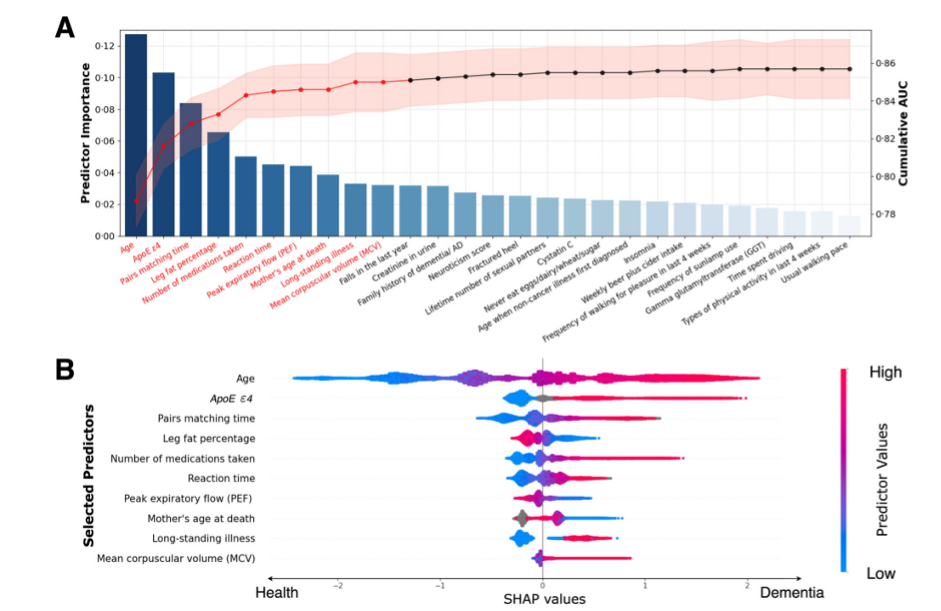Recently, Jintai Yu, a professor at Fudan University-affiliated Huashan Hospital and a researcher at the Tianqiao and Chrissy Chen Institute (TCCI), co-authored a paper titled “Development of a Novel Dementia Risk Prediction Model in the General Population: A large, longitudinal, population-based machine-learning study” published in eClinicalMedicine, part of The Lancet. The study aims to develop a novel dementia prediction model to improve early identification of the disease among high-risk populations.
Due to the long course of dementia, pathological changes occur 20 years before the onset of the disease so by the time a patient is diagnosed with dementia, they have often already missed the optimal therapeutic time window. There is therefore an urgent need to find ways to predict dementia at early stages and to identify populations with high risks. To this end, Professor Jintai Yu’s team and co-authors of the paper have conducted a relevant study.
In this longitudinal, population-based cohort from the UK Biobank (UKB), 425,159 non-demented participants were enrolled (median follow-up time of 11.9 years) and 5,287 developed dementia. Yu’s team implemented a data-driven strategy to identify predictors from 366 candidate variables covering a broad range of genetic and environmental factors including cognition, biochemistry, behaviors, and genes of the participants.
Later, by employing machine-learning algorithms to calculate the significance of each predictor to the model, a novel UKB dementia risk prediction (UKB-DRP) model comprising ten predictors including age, ApoE ε4, Pairs matching – Time, leg fat percentage, number of medications taken, reaction time, peak expiratory flow, mother’s age at death, long-standing illness, and mean corpuscular volume was established.

Predictor selection and SHAP visualization of modelling on all incident dementia population.
The UKB-DRP model consisting of these ten important genetic and clinical predictors achieved AUCs of around 0.85 in predicting the incidence of dementia incidence within five, ten, and much longer years. The value of AUC ranges is between 0.5 and 1. The closer the AUC is to 1.0, the higher the accuracy of the testing method. The model’s performance was even better in Alzheimer Dementia predictions with all AUCs more than 0.86.
The new dementia risk prediction model identified in this study appears to provide a powerful tool for early screening of dementia and facilitates effective and precise prevention and intervention at an early stage of the disease, thereby delaying disease progression and reducing the disease burden.
Click to read paper on eClinicalMedicine
